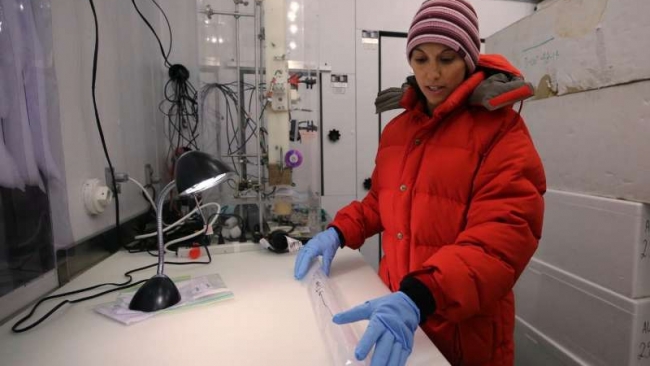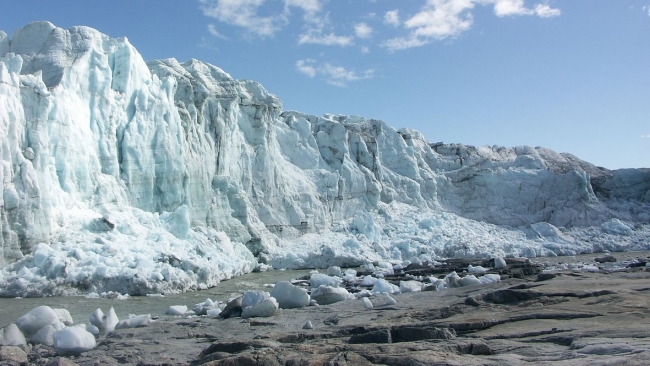Lead pollution in Greenland ice shows rise and fall of ancient European civilizations

To learn about the rise and fall of ancient European civilizations, researchers sometimes find clues in unlikely places: deep inside of the Greenland ice sheet, for example.
Thousands of years ago, during the height of the ancient Greek and Roman empires, lead emissions from sources such as the mining and smelting of lead-silver ores in Europe drifted with the winds over the ocean to Greenland—a distance of more than 2800 miles (4600 km) - and settled onto the ice. Year after year, as fallen snow added layers to the ice sheet, lead emissions were captured along with dust and other airborne particles, and became part of the ice-core record that scientists use today to learn about conditions of the past.
In a new study published in PNAS, a team of scientists, archaeologists and economists from the Desert Research Institute (DRI), the University of Oxford, NILU—Norwegian Institute for Air Research and the University of Copenhagen used ice samples from the North Greenland Ice Core Project (NGRIP) to measure, date and analyze European lead emissions that were captured in Greenland ice between 1100 BC and AD 800. Their results provide new insight for historians about how European civilizations and their economies fared over time.
"Our record of sub-annually resolved, accurately dated measurements in the ice core starts in 1100 BC during the late Iron Age and extends through antiquity and late antiquity to the early Middle Ages in Europe—a period that included the rise and fall of the Greek and Roman civilizations," said the study's lead author Joe McConnell, Ph.D., Research Professor of Hydrology at DRI. "We found that lead pollution in Greenland very closely tracked known plagues, wars, social unrest and imperial expansions during European antiquity."
A previous study from the mid-1990s examined lead levels in Greenland ice using only 18 measurements between 1100 BC and AD 800; the new study provides a much more complete record that included more than 21,000 precise lead and other chemical measurements to develop an accurately dated, continuous record for the same 1900-year period.
To determine the magnitude of European emissions from the lead pollution levels measured in the Greenland ice, the team used state-of-the-art atmospheric transport model simulations.
Read more at Phys.orgSource: Phys.org
Tue 15 May 2018 at 08:58




.jpg)
